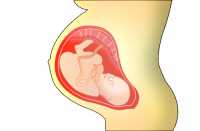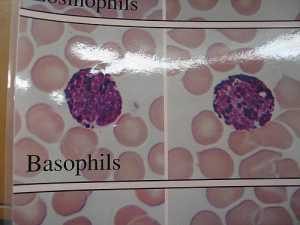MedicalResearch.com Interview with:
Matthieu Domenech de Cellès PhD
Department of Ecology and Evolutionary Biology
University of Michigan, Ann Arbor, MI, USA
.
Biostatistics, Biomathematics, Pharmacoepidemiology, and Infectious Diseases Unit
Institut Pasteur, Inserm,
University of Versailles St-Quentin-en-Yvelines,
Versailles, France.
MedicalResearch.com: What is the background for this study? What are the main findings?
Response: Our main motivation was to elucidate an apparent paradox: Why has the US experienced a resurgence of pertussis (whooping cough) since the mid-1970s, despite persistently high vaccine coverage? A variety of hypotheses have been proposed to explain this resurgence, but most attention has focused on the potential shortcomings of the new generation of pertussis vaccines (called acellular pertussis vaccines). However, there remains considerable uncertainty about the degree and the mechanisms of protection conferred by pertussis vaccines.
Via a collaboration with the local department of public health, we used detailed surveillance data in the state of Massachusetts to test a number of hypotheses about pertussis vaccines. We found that, although pertussis vaccines are imperfect (in the sense that they do not provide lifelong, 100% protection to 100% of children vaccinated), they are still highly efficacious. Specifically, we estimated that vaccine protection wanes over time, but slowly, with about 85% of children still protected 10 years after vaccination. Despite this high vaccine efficacy, we showed that the resurgence of pertussis was, in fact, to be expected. What happens is that the introduction of routine vaccination leads to an overall reduction in transmission, not only in vaccinated children but also in the population at large. Accordingly, those who escaped vaccination as children (as a consequence of incomplete vaccine coverage or imperfect vaccine protection) increasingly age having also avoided natural infection. As a result, the number of individuals susceptible to contract pertussis gradually increases. Because such people are the “fuel” of epidemics, this sets the stage for pertussis’ resurgence, with increasing incidence among older individuals.
This overall effect is called the “end-of-honeymoon” and means that resurgence is therefore a predictable consequence of incomplete vaccination with efficacious, but imperfect, vaccines. Importantly, these results show that recent trends do not necessarily reflect recent changes in the epidemiology of pertussis. Rather, they may be interpreted as a legacy of past immunization practices, with long-to-manifest effects. This is a significant shift of perspective about pertussis epidemiology.
(more…)















 Deborah M Eaton
Doctorate Student / Research Assistant
Temple University
MedicalResearch.com: What is the background for this study?
Response: Heart failure (HF) with preserved ejection fraction (HFpEF) accounts for approximately 50% of cases of HF and to date clinical trials with HFpEF patients have failed to produce positive outcomes. Part of this is likely due to the lack of HFpEF animal models for preclinical testing. Our lab addressed this gap in knowledge by developing an animal model that mimics critical features of the human HFpEF phenotype. We performed an in-depth cardiopulmonary characterization highlighting that the model has characteristics of human disease. We then tested the effects of a pan-HDAC inhibitor, vorinostat/SAHA, in collaboration with Dr. Timothy McKinsey, who is an expert in HDAC inhibitors and recently published work1 that laid the foundation for this study.
Deborah M Eaton
Doctorate Student / Research Assistant
Temple University
MedicalResearch.com: What is the background for this study?
Response: Heart failure (HF) with preserved ejection fraction (HFpEF) accounts for approximately 50% of cases of HF and to date clinical trials with HFpEF patients have failed to produce positive outcomes. Part of this is likely due to the lack of HFpEF animal models for preclinical testing. Our lab addressed this gap in knowledge by developing an animal model that mimics critical features of the human HFpEF phenotype. We performed an in-depth cardiopulmonary characterization highlighting that the model has characteristics of human disease. We then tested the effects of a pan-HDAC inhibitor, vorinostat/SAHA, in collaboration with Dr. Timothy McKinsey, who is an expert in HDAC inhibitors and recently published work1 that laid the foundation for this study. 












